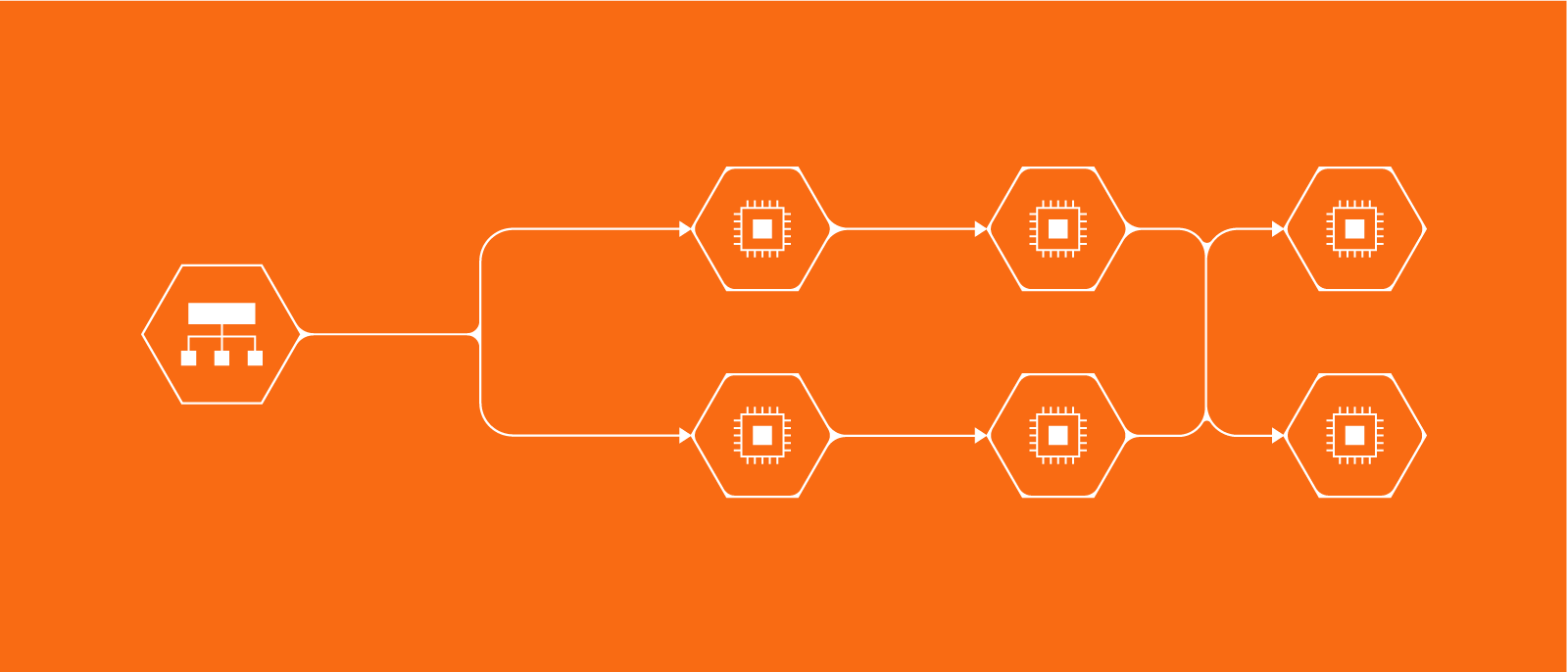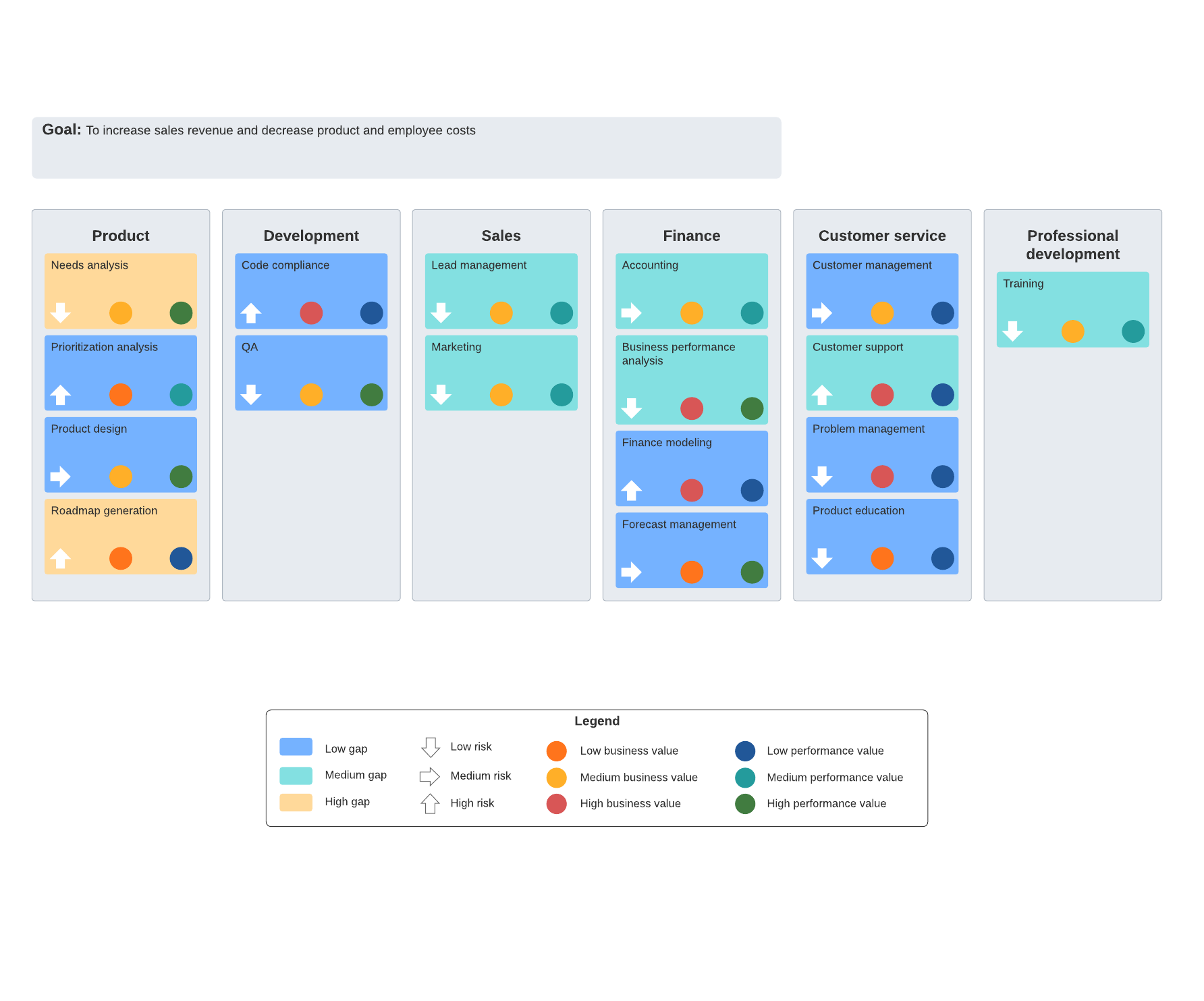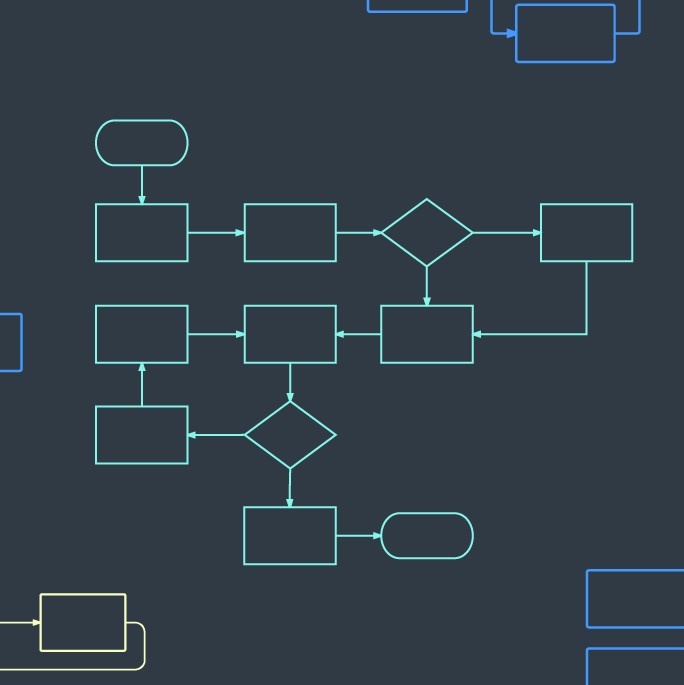
A quick guide to business capability maps
Reading time: about 7 min
People have been using maps for thousands of years as a way to identify where they are and to understand what they need to do to get where they need to go. As technology continues to rapidly change our world, businesses that want to identify where they are and where they need to go should also use maps.
There are several different types of maps businesses might use to understand roles, responsibilities, processes, systems, and standards. These business maps can take many different forms, including flowcharts, diagrams, org charts, timelines, and so on. Maps give you a bird's eye view of how your business works so you can more easily see what’s working and where improvements need to be made.
Business maps are basically visual representations of the various types of planning, strategic, and other business knowledge documents that companies track and maintain. They are good companions to text-heavy documents because they are easy to read and understand, keep the focus on the big picture, and align internal processes.
In this article we’ll focus on business capability maps—a type of map that gives businesses clarity into what they do instead of how they do it.
What is a business capability map?
We often think of business mapping in terms of processes and tasks used to reach specific goals. These maps focus on how things are done. But a business capability map looks at a business in terms of its capabilities. These maps focus on what the company does and can do.
A business capability describes the capacity, materials, and expertise an organization has or needs to complete their work. So a business capability map is a visual representation of the capabilities you’ve identified and defined.
Sounds simple enough, right?
Well, it can be challenging as your team works to determine what is or is not a capability. Here are a few guidelines to help you to define capabilities:
- Capabilities describe “what” not “how” something is done. For example, account management is a capability because it describes that a business is capable of managing accounts. It does not describe who manages the accounts or how and where they are managed.
- Capabilities have outcomes. Again, account management works as an example because the outcome is client retention and loyalty.
- Capabilities need to be clearly defined. If you are identifying account management as a capability, you need to define “account” and “management.” This can help to create a common language.
- A capability’s intent is unique. For example, if you have a capability called customer management and another one called partner management, these might seem like the same thing. A customer and a partner may be the same person, but the roles of customer and partner are different and require a different set of management capabilities.
- A capability can be tangible or intangible. Product manufacturing is a tangible business capability because you can see the factory floor, the machinery, and the people used to make the product. An intangible capability might be the description of your company’s alignment with Agile principles and its ability to work in an agile environment.

What are the benefits of business capability maps?
Business capability mapping offers several advantages that support efficient and effective IT management. These advantages include:
- Helps you analyze how IT can optimally support your business by showing you how well or how poorly business capabilities are supported by available applications. This makes it easy to figure out where improvements need to be made.
- Aligns funding with core capabilities.
- Gives you a 360-degree view of the enterprise including business motivation, capabilities, processes, data, and resources. And helps you to understand how these all relate to each other.
- Creates a common language that opens communications across diverse departments and divisions without technical jargon. This keeps everybody on the same page working toward the same goals.
- Brings business and IT together which leads to a better business definition and effective technology solutions.
- Fosters the reuse of IT assets which saves time because you don’t have to build something new every time. This also speeds up time to market.
When would you use business capability maps?
There are several scenarios where you might want to use a business capability map.
IT consolidation after a merger and acquisition
When two companies come together, an effort is made to consolidate core and support functions. Often there will be overlap and redundancies in these functions. A business capability map is a good starting point for identifying overlap in various organizations.
Strategic planning and IT investments
Business capability maps help you in planning for multi-year, long-term investment planning. The maps can show gaps between current and future capabilities so you can identify areas that need the money.
Product roadmap and development
Capability mapping can help you to conceptualize new products or services. It can help you to keep the vision of the final product in perspective and keep everybody on the same track.
What are some business capability mapping challenges?
Like many processes that are new to people in your organization, business capability mapping includes a set of challenges. One of the biggest challenges might be getting top-down buy-in. You might get pushback if management and employees don’t see any benefits to using capability maps. You may need to educate stakeholders and team members about the benefits of capability maps by using case studies and examples.
How do you create a business capability map?
There is not a one-size-fits-all procedure for creating business capability maps. Here we suggest some general guidelines to help you to develop the procedure that works best for you. To help you work through these guidelines, use Lucidchart intelligent diagramming features and templates to collaborate and make better decisions as you build your company’s future.
Start with the value chain
The value chain includes all of the steps and processes involved in taking a product or service from conception to release to market. The information you get from a value chain is a good starting point for determining what our business capabilities are and how they align with business activities such as material and equipment procurement, manufacturing, resource management, and marketing.
Industry and vision alignment
Understand what drives your industry and list your company’s strengths within the market. Describe how these strengths align with your program vision by answering questions like:
- What value are you creating?
- Which customers will get the most value from the product?
- Who interacts with the customers?
- Who are the key stakeholders?
- What activities will be performed?
- What costs might impact the program?
Document capabilities
Bring together leadership and other subject matter experts to compile a list from the top-down of business capabilities by focusing on the following:
- Customer-related activities like onboarding, account access, retention, and so on.
- Stakeholder-related activities including identifying who the stakeholders are, managing expectations, etc.
- Activities related to investment planning, tax planning, insurance planning, and so on.
- Activities related to distribution channels like relationship management and client service management.
- Business support activities such as accounting, risk, and compliance.
- Infrastructure management, data management, and so on.
Break down these capabilities into smaller units and subcategories of other capabilities. Then determine how they relate to each other. This activity helps you to define your business framework and core business architecture.
Overlay business and technical architecture
Your capability map should not only include your business architecture. It should also include your IT architecture. This ensures that business and IT management are aligned and speaking the same language as your teams work toward the same goals.
Review and prioritize
Review the defined capabilities with key business and IT stakeholders. Identify gaps and redundancies. Determine which capabilities have higher customer value and give them higher priority, then work your way down to the lowest priority capabilities.

We recently partnered with Salesforce on a business capability map template—complete with a Salesforce shape library.
Check it outAbout Lucidchart
Lucidchart, a cloud-based intelligent diagramming application, is a core component of Lucid Software's Visual Collaboration Suite. This intuitive, cloud-based solution empowers teams to collaborate in real-time to build flowcharts, mockups, UML diagrams, customer journey maps, and more. Lucidchart propels teams forward to build the future faster. Lucid is proud to serve top businesses around the world, including customers such as Google, GE, and NBC Universal, and 99% of the Fortune 500. Lucid partners with industry leaders, including Google, Atlassian, and Microsoft. Since its founding, Lucid has received numerous awards for its products, business, and workplace culture. For more information, visit lucidchart.com.
